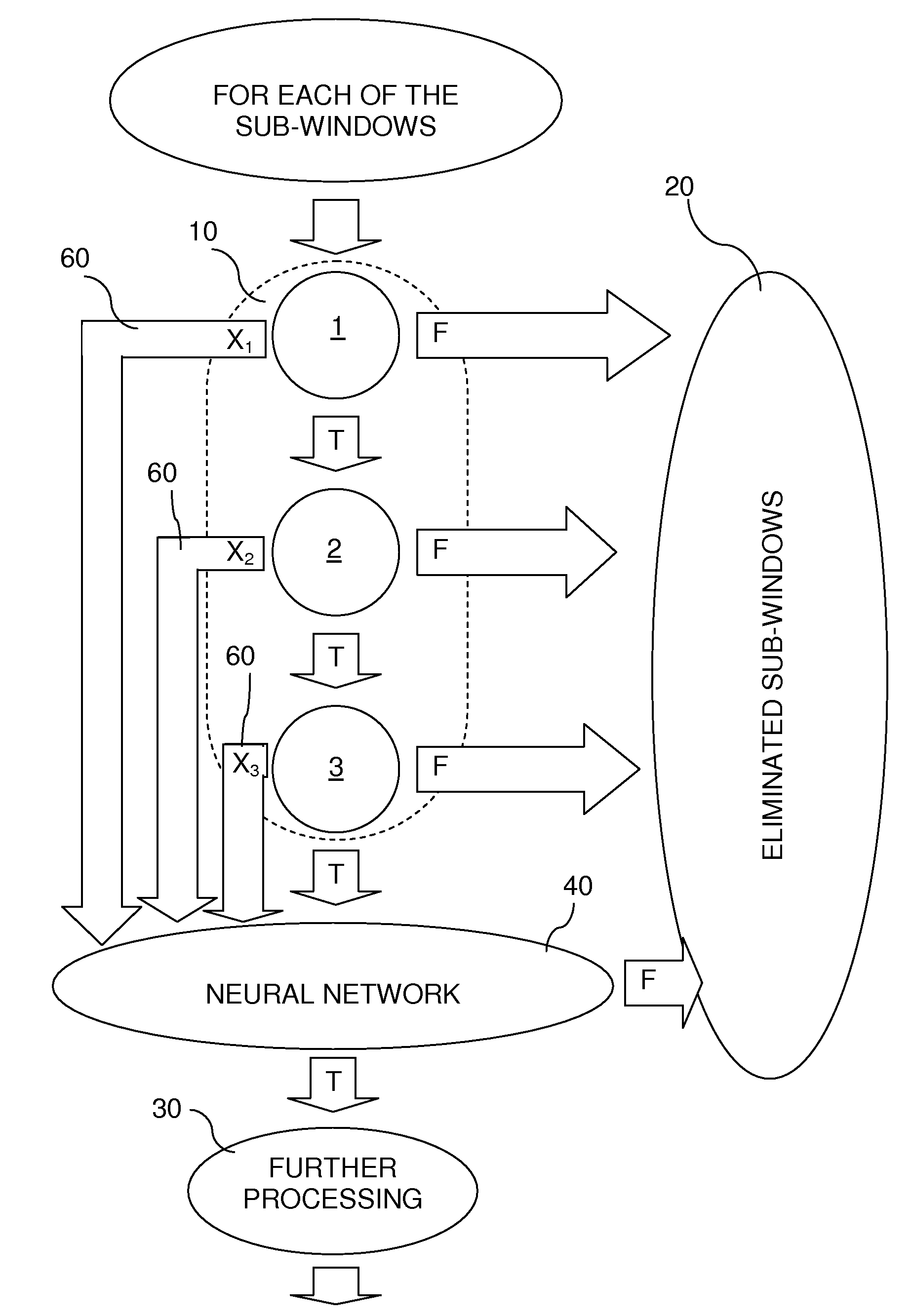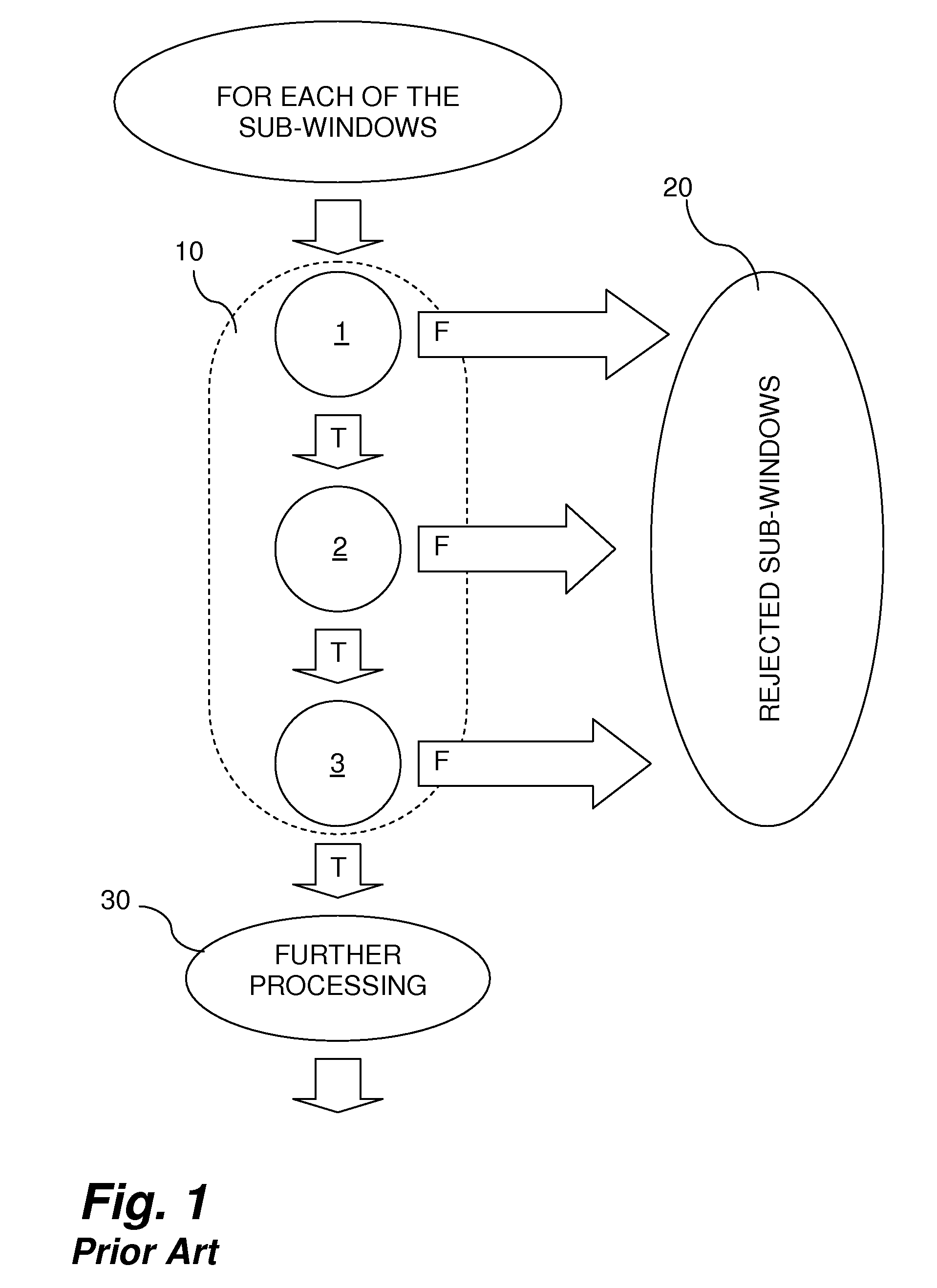Method for object detection
a technology for object detection and object detection, applied in the field of object detection, can solve the problems of reducing the overall processing effort of information about the presence of objects in digital images and the location thereof, requiring relatively high power consumption, and not being able to implement technology, so as to reduce the computation time of the neural network and limit the connection of the neural network
- Summary
- Abstract
- Description
- Claims
- Application Information
AI Technical Summary
Benefits of technology
Problems solved by technology
Method used
Image
Examples
an example
[0062]Assuming a digital image is divided into M sub-windows Si (each one is a 20*20 sub-image in the form of an integral image), and the cascade of classifiers comprises N classifiers Gj.
[0063]Vj is a vector Xj=Gj(Si). Xj is the output of classifier Gj before threshold Tj translates the output to a Boolean value. A True or False value may be determined by threshold Tj.
[0064]According to embodiments of the present invention, vector Vj, j=1 to M, is used as input for a Supportive Neural Network. Thus, assuming NN(V) is the Supportive Neural Network, the result thereof is B=NN(V), wherein B is Boolean value, indicating whether the object is in the sub-window or not.
[0065]In contrast to the prior art, which makes no use of the results of the classifiers (i.e., the vector Vj), according to embodiments of the present invention, results of the classifiers are used as inputs for SNN.
[0066]In order to use a Supportive Neural Network as means for detecting whether a sub-window which has been...
PUM
 Login to View More
Login to View More Abstract
Description
Claims
Application Information
 Login to View More
Login to View More - R&D
- Intellectual Property
- Life Sciences
- Materials
- Tech Scout
- Unparalleled Data Quality
- Higher Quality Content
- 60% Fewer Hallucinations
Browse by: Latest US Patents, China's latest patents, Technical Efficacy Thesaurus, Application Domain, Technology Topic, Popular Technical Reports.
© 2025 PatSnap. All rights reserved.Legal|Privacy policy|Modern Slavery Act Transparency Statement|Sitemap|About US| Contact US: help@patsnap.com



